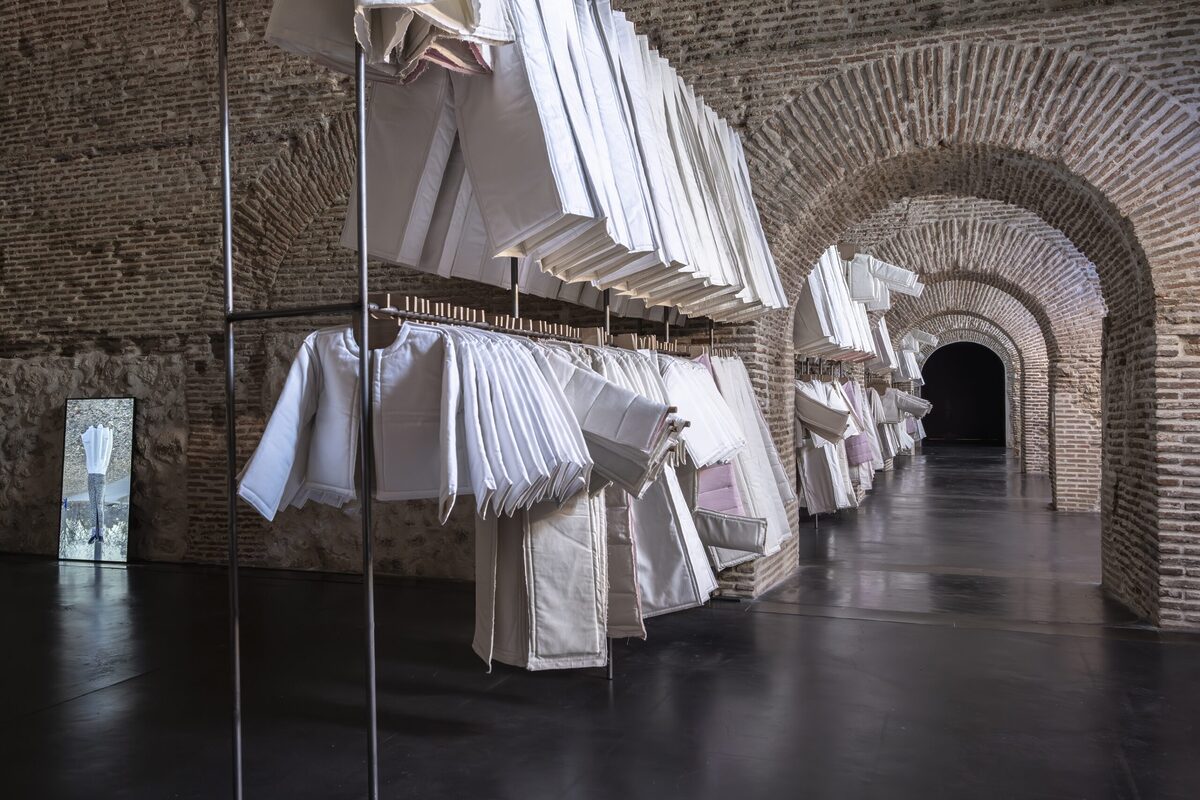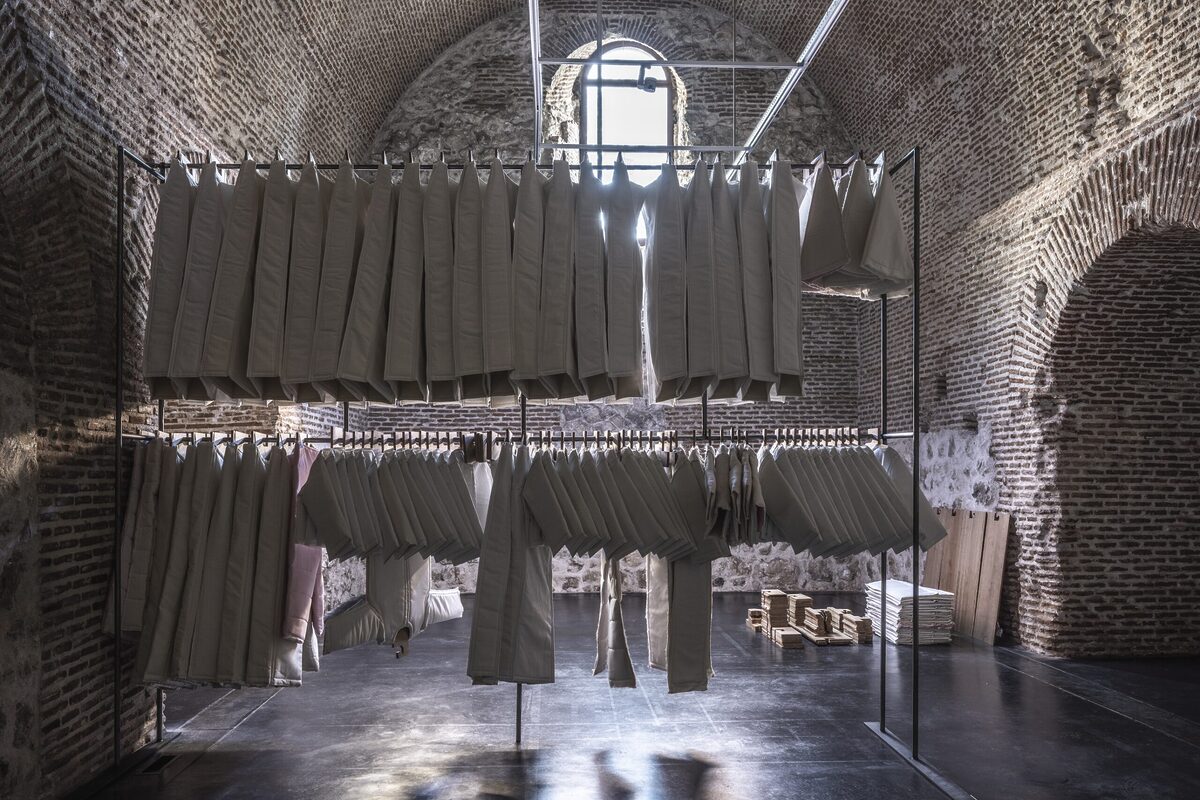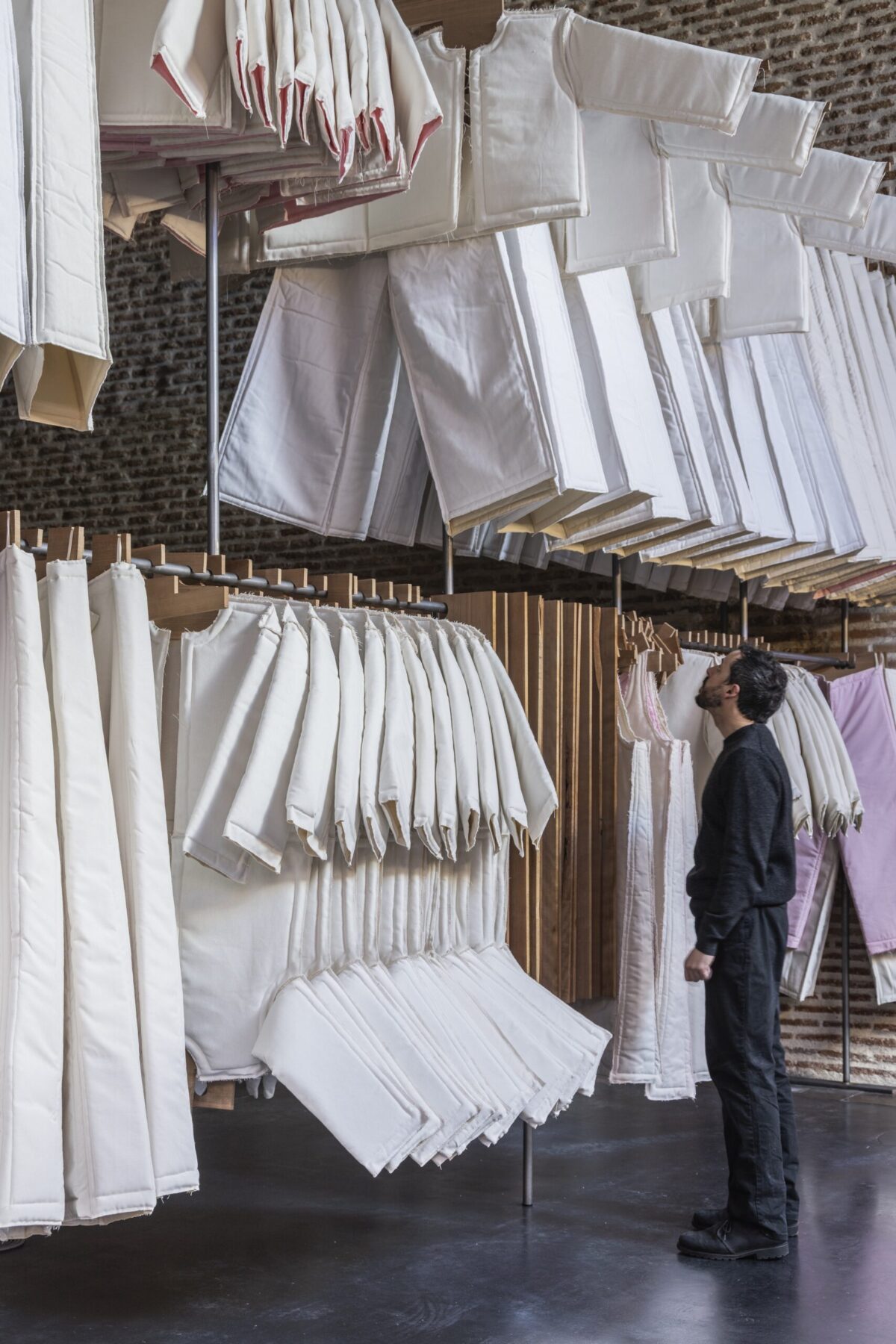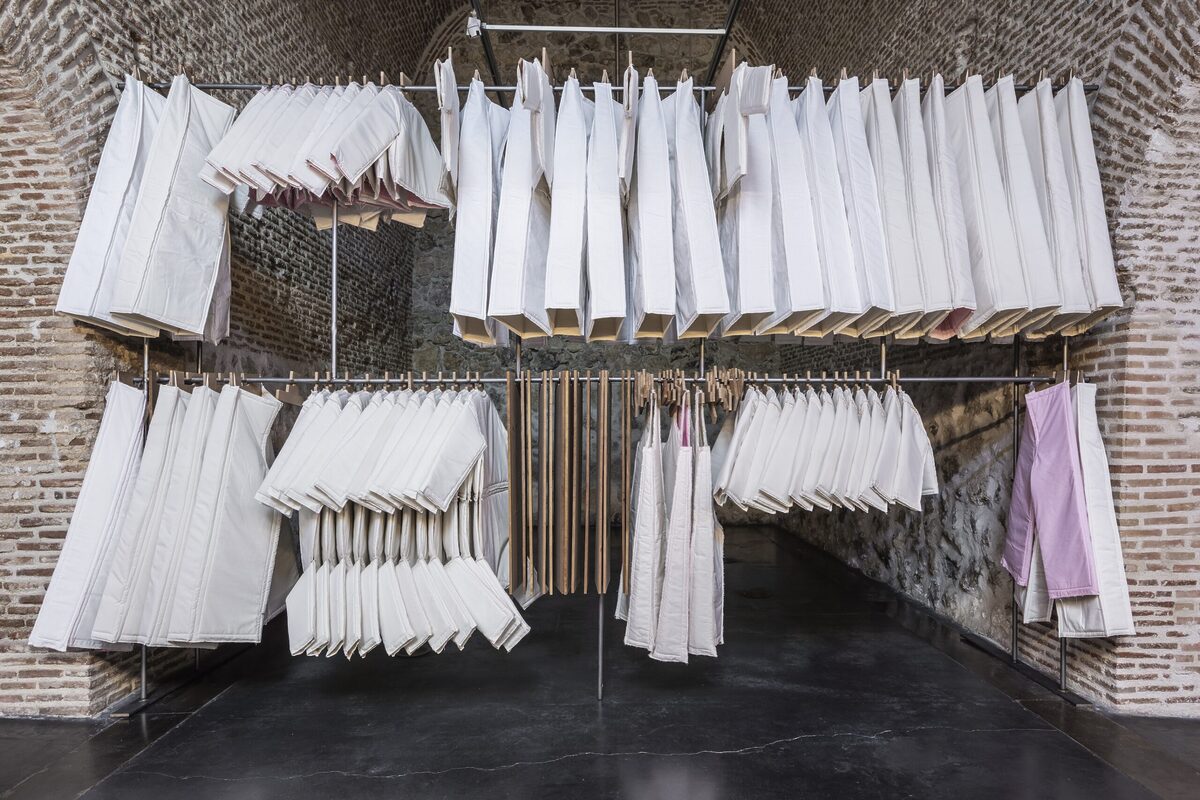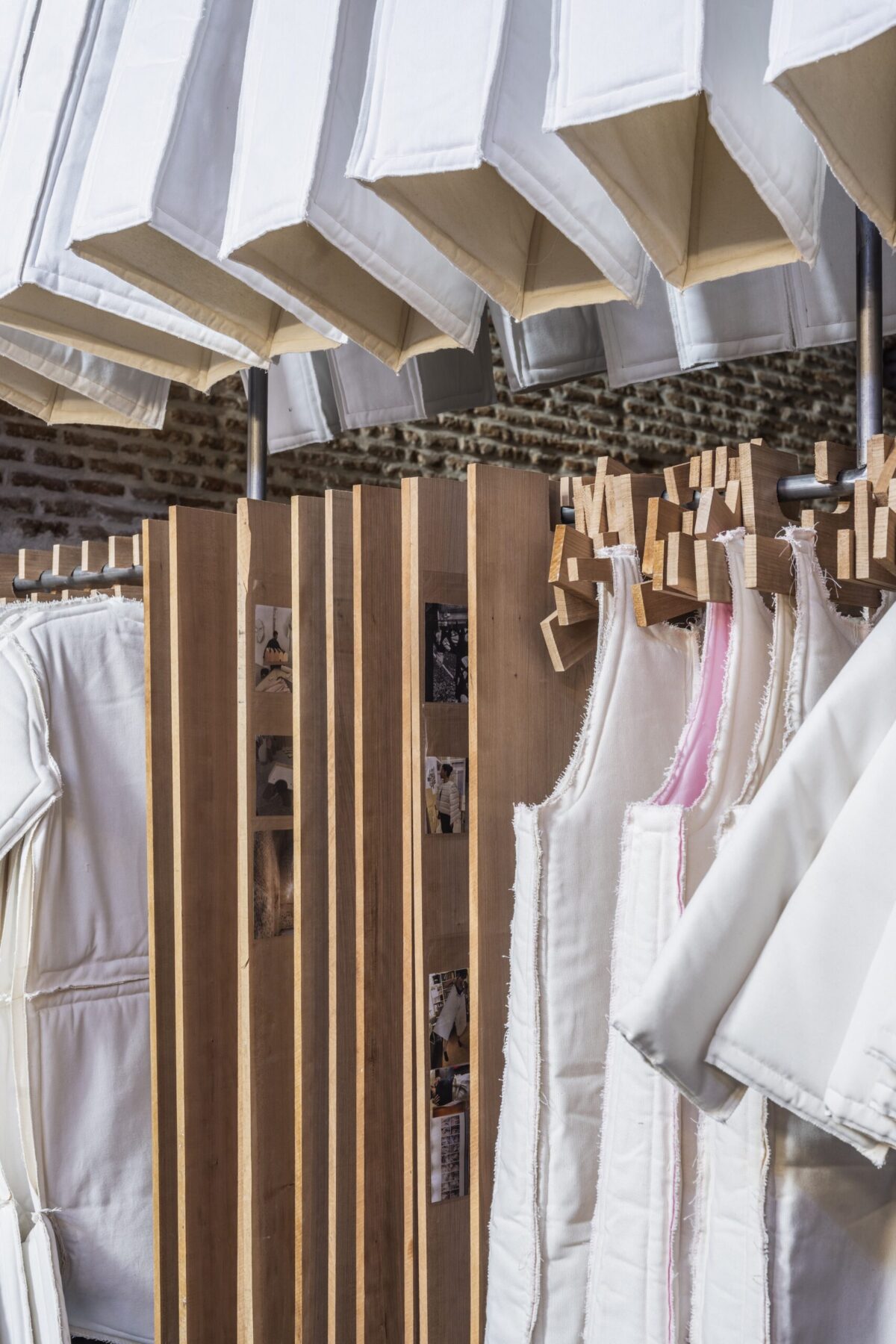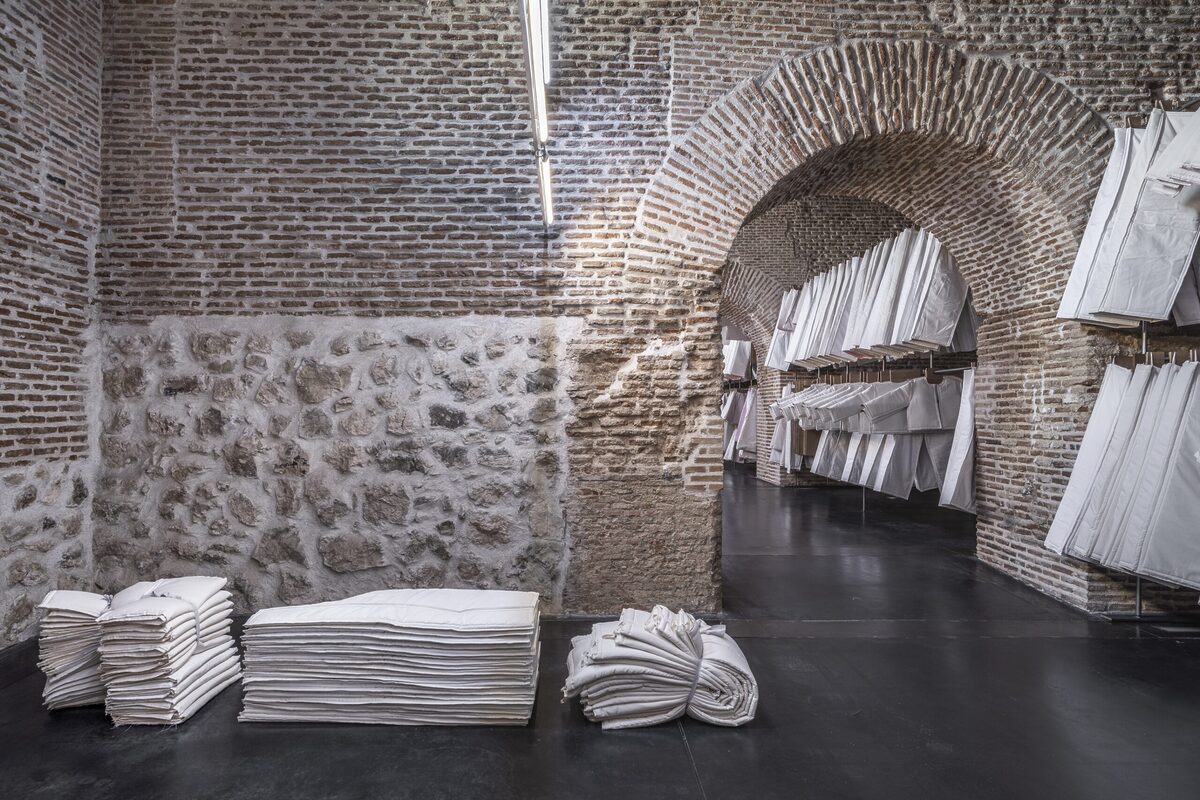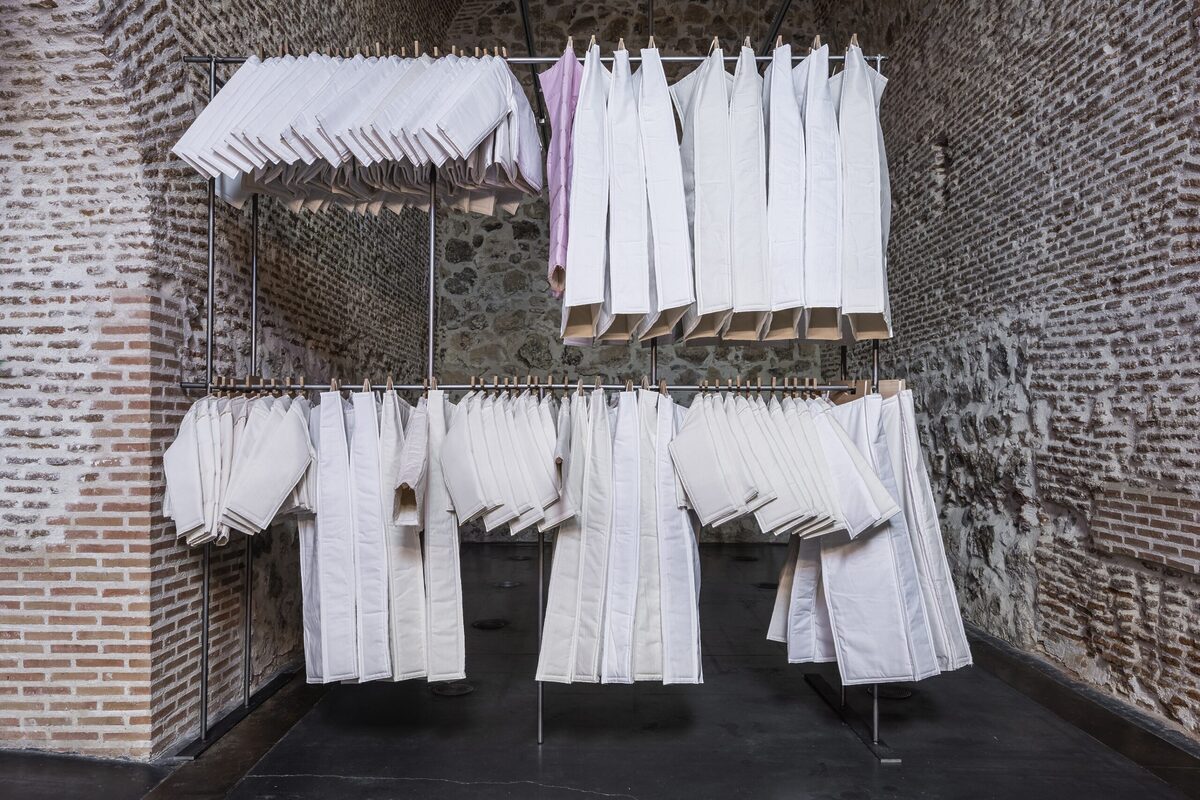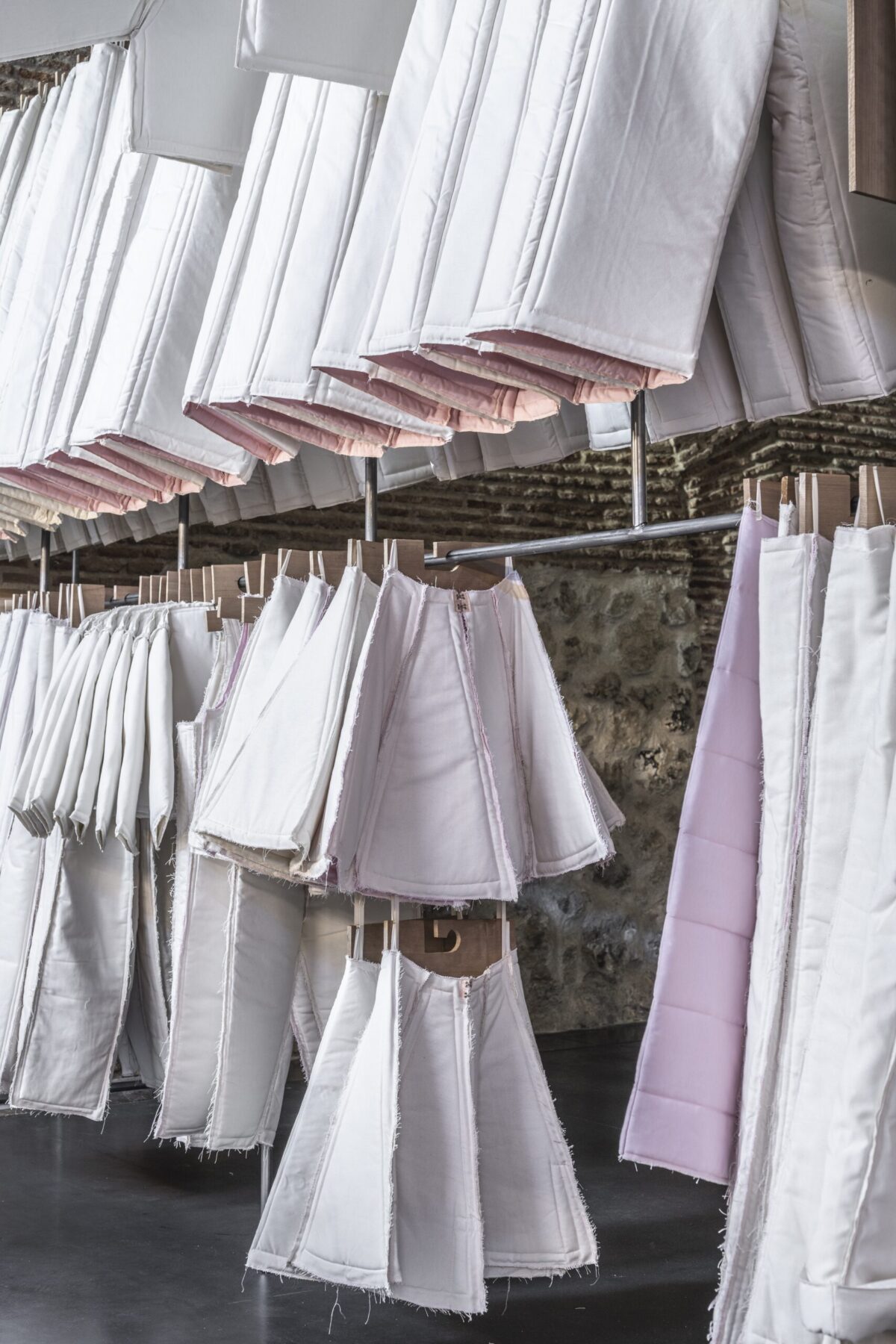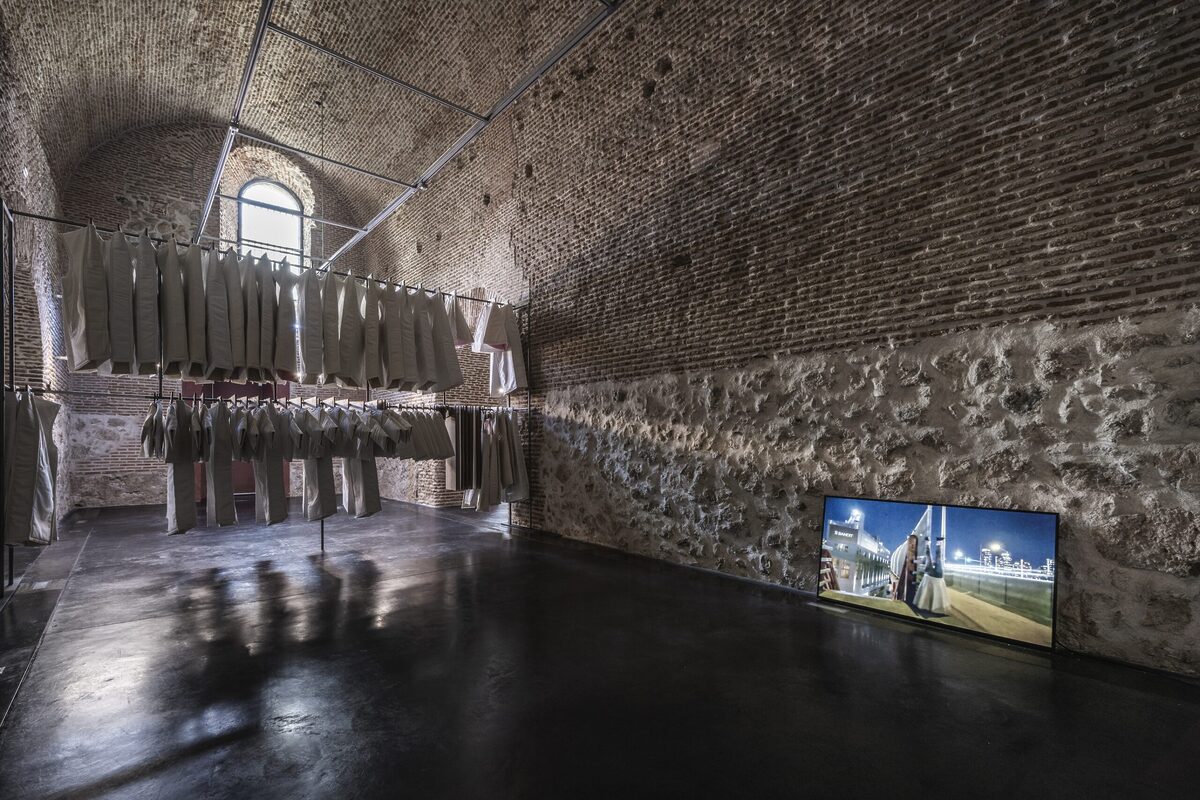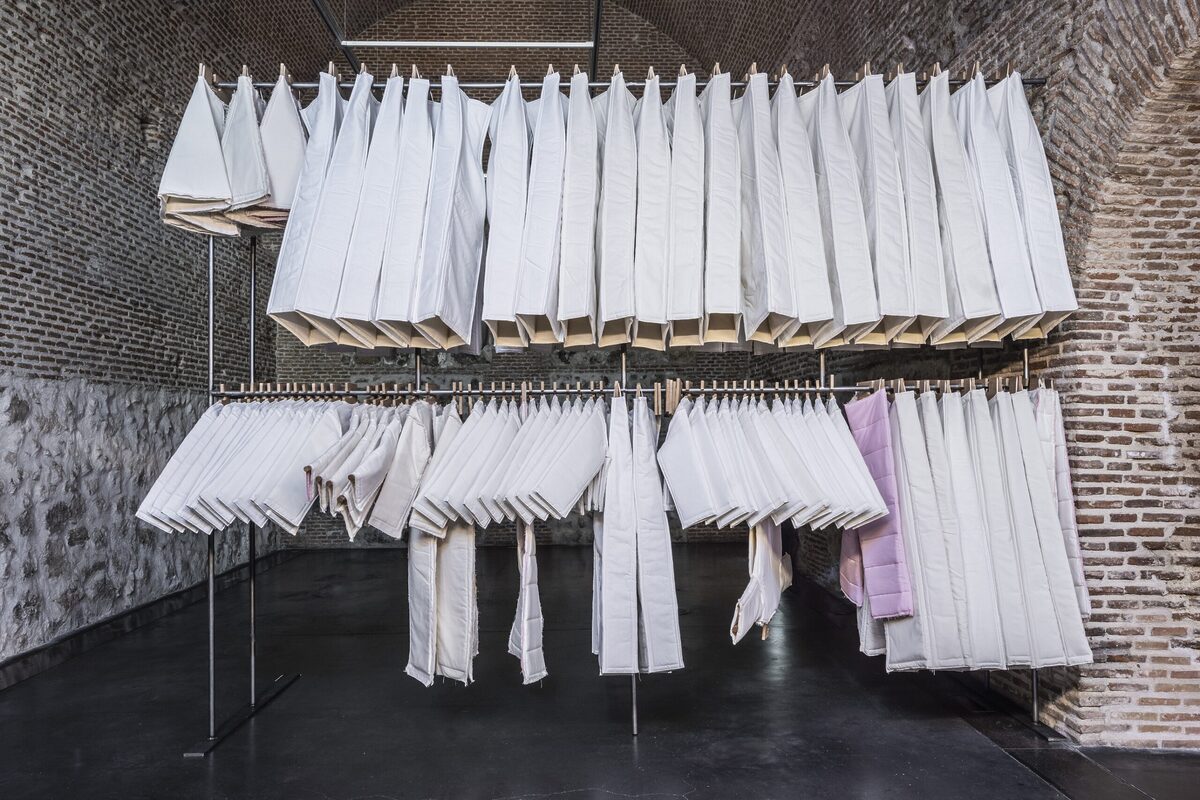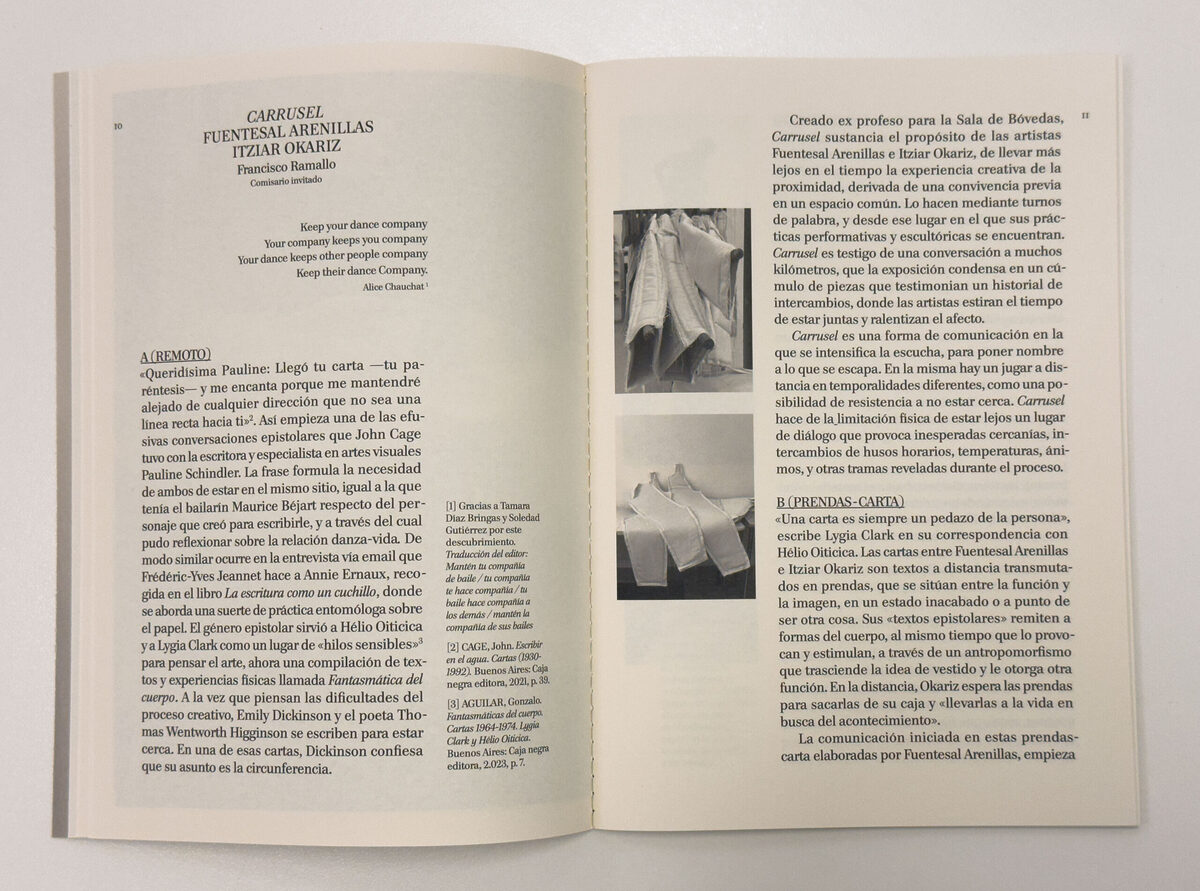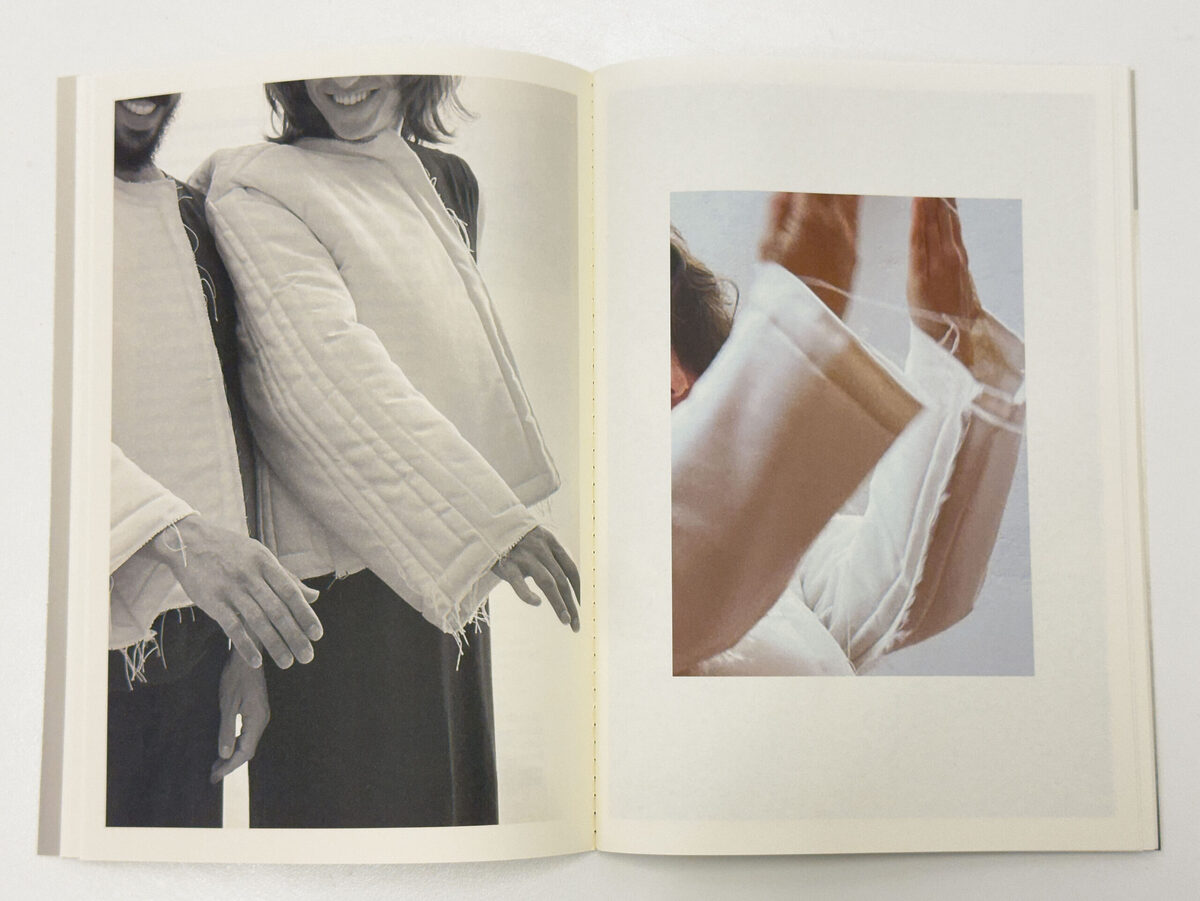Carrusel is the aim of the artists Fuentesal Arenillas and Itziar Okariz, to take the creative experience of proximity, derived from a previous coexistence in a common space, further in time. They do so by taking turns to speak, and from that place where their performative and sculptural practices meet. Carrusel is witness to a conversation many kilometres away, which the exhibition condenses into an accumulation of pieces that bear witness to a history of exchanges, where the artists stretch the time of being together and slow down affection.
“A letter is always a piece of the person”, writes Lygia Clark in her correspondence with Hélio Oiticica. The letters between Fuentesal Arenillas and Itziar Okariz are distant texts transmuted into garments, situated between function and image, in an unfinished state or on the verge of being something else. Their “epistolary texts” refer to forms of the body, at the same time as they provoke and stimulate it, through an anthropomorphism that transcends the idea of clothing and gives it another function. In the distance, Okariz awaits the garments to take them out of their box and “bring them to life in search of the event”.
The communication initiated in these garment-letters made by Fuentesal Arenillas begins to be answered when Okariz enters them, moving the pieces in search of them, in a sort of wink to the theatricality of the object. The artist activates them in different registers: following the impositions of the canvas or using sticks as auxiliary limbs, to seek the movement of the body. Okariz also familiarises herself with the garments by inviting others to slip into them, so that through the holes the hands become feet and grasp each other, the legs become arms, or a double jacket becomes trousers for two. In the course of this, the material of the skirt-cards, trouser-cards or jacket-cards forces the movement of the body that is instructed by the garment, while the garment envelops, envelops and modifies it.
The overwhelming architecture of the Sala de Bóvedas is approached as a shared box, in line with the one the artists have used to send their garment-letters. It now resembles a container that seems to fold up to support the work, and opens to the outside through a “descent” of windows, so that there is more light at certain times of the day.
The pieces invite you to walk, to move around, to recognise their parts, to find sequences or identify patterns. Crossing the garments and their “happening between” emphasises the non-fixed character of the exhibition. It refers to another architecture, that of the body and its circumstances. “We are strangers/you and myself/and my house” says Idea Vilariño in the poem Un huésped.
The organisational and care guide to the object that the archival implicitly implies functions here as a call to a new “documentary situation” that cancels out its original function. In its flight, while trying to fix a narrative, the flow of sculptures seems to tend to lose its form. This may be due to their accumulation, to the impossibility of achieving exact copies, or to the pleasure of insistence.
While thinking together has generated a correspondence, like a search for a form or for something that is implicit, the conversation has slipped into the time of the exhibition, becoming dramaturgy. Carrusel is presented as a trace of a conversational exchange with paralinguistic signs, such as the intensities of the conversation or the gestures and postures projected by the pieces. It also shows that the word is consubstantial with the body, and that communication at a distance can generate sculpture.
Carrusel behaves like a combination of words. It has something of a calligrammatic quality, which seems to want to continue to the outside of the page. This profusion of garments, in the textuality it evokes, behaves like a polysemic plot that is drawn through the vaults. It suggests a phrase like a row of bodies helping each other to pass (“Keep your dance company”). When the garment-letters have been answered, they can cross the space resembling sounds, as if they are allied to imitate a shout, a lightning, a swell.
_Francisco Ramallo
